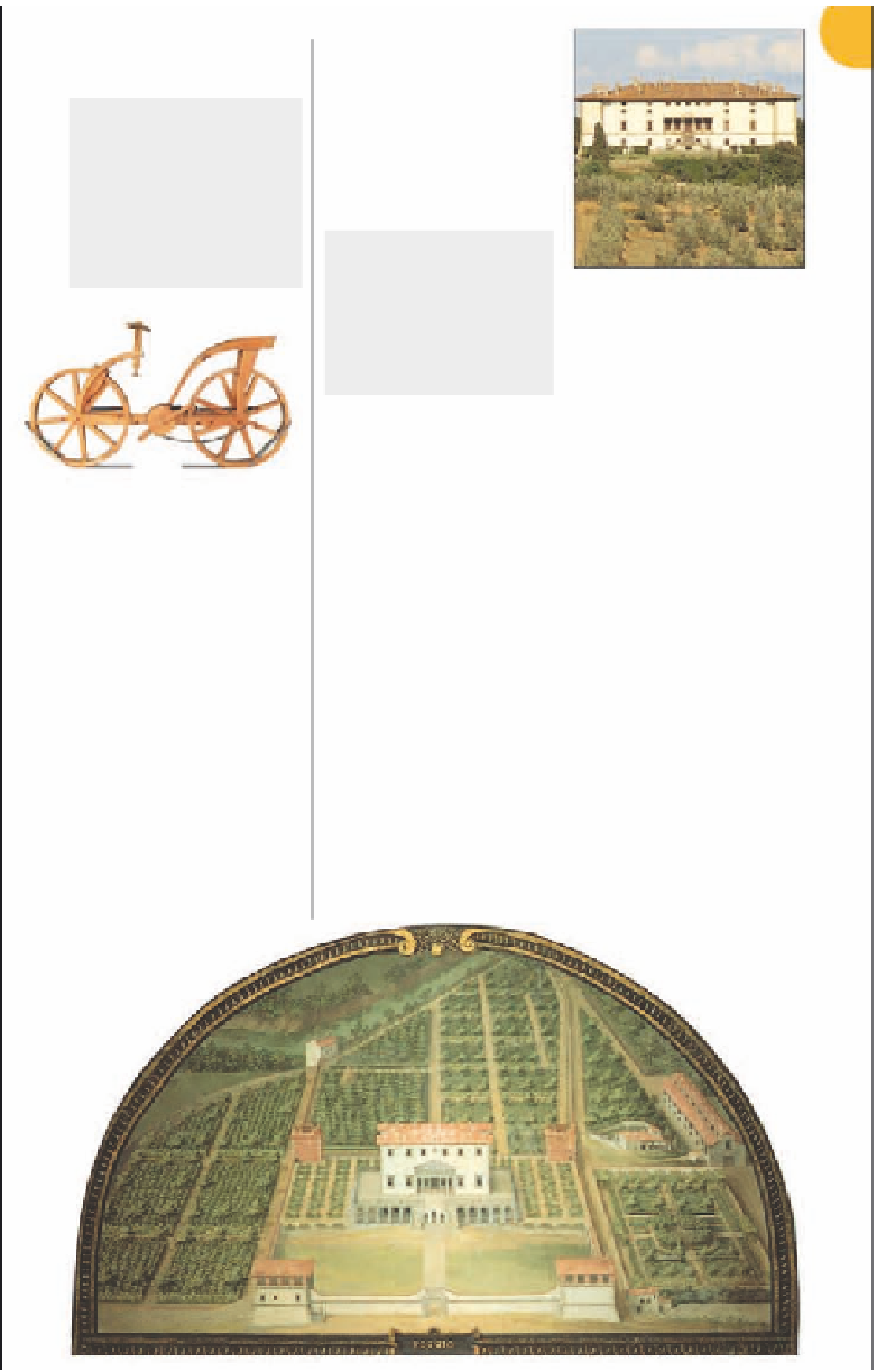Travel Reference
In-Depth Information
to be overawed by the exhibits,
which mostly consist of a few
reproduction drawings.
E
in the basement, which
exhibits Etruscan and Roman
artifacts, is open to the public.
The church of
San Michele
in Carmignano, only 5 km
(3 miles) north of Artimino,
contains Pontormo's (1494-
1557) great masterpiece,
The
Visitation
(1530).
Museo Leonardiano
Castello dei Conti Guidi.
Tel
0571 560 55.
Mar-Oct:
9:30am-7pm daily; Nov-Feb:
9:30am-6pm daily.
#
&
E
Casa di Leonardo
Anchiano
.
Tel
0571 560 55.
#
Villa di Artimino
Via Papa Giovanni XXIII
.
Tel
055
875 14 27.
P
Mar-Oct: 9:30am-7pm daily;
Nov-Feb: 9:30am-6pm daily.
#
Tue am (by appoint-
Villa di Artimino
ment).
8
compulsory.
7
partial.
San Michele
Pza. SS Francesco e Michele,
Carmignano
.
Tel
055 871 20 46.
statesmen in the manner
of ancient Roman figures.
The
salone
also contains
Pontormo's colourful
Conette
fresco (1521). It portrays
the Roman garden deities,
Vertumnus and Pomona -
a perfect evocation of a
Tuscan summer afternoon.
R
#
daily.
Poggio a Caiano
w
Road map
C2
.
Tel
055 87 70 12.
#
daily (except 2nd and 3rd Mon
of each month).
Model bicycle based on drawings
by Leonardo, Museo Leonardiano
&
7
Certosa di
Firenze
e
Road map
D2
.
Via Buca di
Certosa 2
.
Tel
055 204 92 26.
#
Artimino
q
Road map
C2
.
The Villa di Poggio a Caiano,
built by Giuliano da Sangallo
for Lorenzo de' Medici
(see
p50)
in 1480, was the first
Italian villa to be designed
in the Renaissance style. Its
original severity is now sof-
tened by the graceful, curved
staircase (added in 1802-7)
leading up to the terrace, with
its views of the park beyond.
The villa's barrel-vaulted
salone
contains 16th-century
frescoes by Andrea del Sarto
and Franciabigio. They were
commissioned by the future
Leo X, the Medici pope, to
portray his family as great
@
daily.
8
compulsory.
Artimino is a fine example
of a
borgo
, a small fortified
hamlet, and is remarkable for
the unspoiled Romanesque
church of San Leonardo. Out-
side the walls, higher up the
hill, lies the
Villa di Artimino
,
designed by Buontalenti in
1594 for Grand Duke Ferdi-
nando I. It is often referred to
as the “Villa of a Hundred
Chimneys”, because of the
numerous and highly ornate
chimney pots crowding the
roofline. The building is now
used as a conference centre,
but the Museo Archeo-
logico Etrusco
The Charterhouse of Florence
lies in the suburb of Galluzzo,
where the Ema and Greve riv-
ers meet. The high, fortress-
like walls have sheltered a
small community of monks
since 1341, when the monas-
tery was founded here.
The cloister and Palazzo
degli Studi within contain
several artworks, including
a damaged but still beautiful
series of 16th-century frescoes
by Pontormo depicting
scenes from the Passion
of Christ.
Villa di Poggio a Caiano
from the set of lunettes by Giusto Utens
(see p71)



































